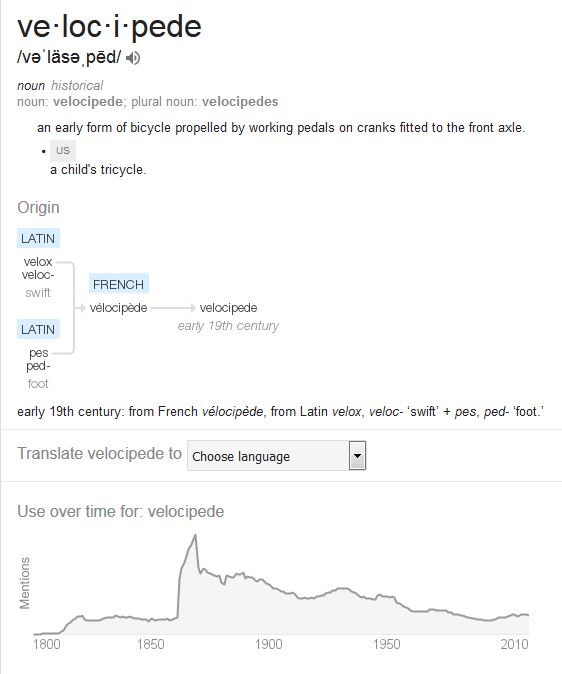Bicycle Built For Two
Bicycle Built For Two
.
The nineteenth century’s bicycle craze included bicycles for two. Some gave pals (both male) an opportunity for sport, exercise, and freedom. Others were leveraged for courtship and time alone with a man’s best gal. Some were truly tandem (situated one in front of the other). Others allowed the lady to pedal while others simply sat her in a place of prominence allowing her a view of the road ahead. And some existed for a brief period of time until the next great thing came along.
.

This image of a nineteenth century bicycle for two has more than 1,000 postings on Pinterest alone. Google’s best guess for this image is: bicicletas antiguas de mujer, which translated, from Spanish to English, means: women’s antique bicycles.
.
![]()
.
TANDEM BICYCLE
.
The tandem bicycle or twin is a form of bicycle (occasionally a tricycle) designed to be ridden by more than one person. The term tandem refers to the seating arrangement (fore to aft, not side by side), not the number of riders. A bike with two riders side by side is called a sociable. [source] (bold added for emphasis)
.

Earliest Tandem Bicycle– appears to be a velocipede from circa 1869. Image: Pinterest. Note the absence of a chain. Or brakes.
.
Apparently, that’s what “velocipede” means: A bicycle without a chain:
.

![]()
.
SOCIABLE BICYCLE
.
The Sociable or Buddy Bike or Side By Side Bicycle is a bicycle that supports two riders who sit side by side. This type of bicycle should not be confused with a tandem bicycle, where the riders sit fore and aft rather than beside each other.
.
…The sociable is said by some to have been invented by Australian cyclist Hubert Opperman, although in its basic form it has been around for longer, since the end of the 19th century. It was originally marketed by the Punnett Cycle Company. Historically it has been used as a courting bike; gentlemen would be able to spend time with young ladies in an activity that allowed proximity.
.
[source]
.

Sociable Bicycle, 1890s. Note the oversized leg-o-mutton sleeves popular in that decade.
.
![]()
.
CONVINCING HER TO RIDE
.
No matter how adverse to wheeling a woman may be, if by any means she can be coaxed to the front seat of a tandem and giving a spin over a good road, her conversion is a forgone conclusion. (The Ladies’ World, June 1897). ~ Quoted in Manners and Morals of Victorian America by Wayne Erbsen, page 13.
.
![]()
.
PATENTS FOR TANDEM BICYCLES
.
Note that this first patent (1888, in first two images) shows a seat in front for a non-steering passenger (in two views). Two sets of pedals, only one steering shaft. Second (front) handlebars are for balance only.
.

Smith Tandem Bicycle, Patent 391,490, on October 23, 1888. Page 1 of 2. Note: Rear Seat Steers.
.

Smith Tandem Bicycle. Patent 391,490, on October 23, 1888. Page 2 of 2. Note: Rear Seat Steers.
.
The following two examples from inventors Hall and Starley most closely resemble the bicycle my hero Chadwick “C.C.” Hughes built for his bride, Sophia Sorensen from two commercially available bicycles. He already knew of her love for her bicycle, the flack she’d received from the local newspaperman for riding her bicycle even after winter set in, and Chad knew she’d love it. This bicycle meant a great deal to him–and he knew it would mean a great deal to her. First and foremost, a sign of his desire to spend more time with her. The price tag, alone, showed just how much he wanted to make their courtship permanent. What book is this? Sophia’s Leap-Year Courtship.
.
.
.
TANDEM SAFETY BICYCLE
.

The Tandem Bicycle, from Cycling by Viscount Bury, KCMB and G. Lacy Hillier, 2nd Edition (published 1887), Revised, P. 12.

Tandem Safety Bicycles, from Cycling by Viscount Bury, KCMG, and G. Lacy Hillier, 2nd Edition, (published 1887) p. 416-417.
.
.
AN 1889 TANDEM BICYCLE
.

Orient Combination Tandem Bicycle in Waltham, MA, 1899 with two-person steering. Image: Public Domain, courtesy of Wikipedia.
.
Double steering
Both riders, in the case of just two, may be able to steer. The Star Cycle Company, of Wolverhampton, England, marketed its “Combination Roadster tandem” in 1896. It had a link from the second set of handlebars to the front fork. Others include the 1897 Geneva, and the 1898 Stearns. [source]
.

1895 Victor Double-steering tandem bike. Image: Pinterest.
.
.
BICYCLE CRAZE CONTINUED
.

Full page spread of the Sears Roebuck & Co. catalog of 1898, #107. Notice bicycles for men, women, and two tandem bicycles offered.
.
$57.50 in 1898 would have been no small chunk of change. [$57.50 was the price of both the Acme King tandem bicycle (two male riders) and the Acme King Combination Tandem (one male and one female rider).]
.
$57.50 of 1898 dollars would be worth: $1,642.86 in 2015 (latest year available)
.
![]()
.
.
Related Articles
.
Updated December 2021
Copyright © 2017 Kristin Holt LC
Bicycle Built For Two Bicycle Built For Two























